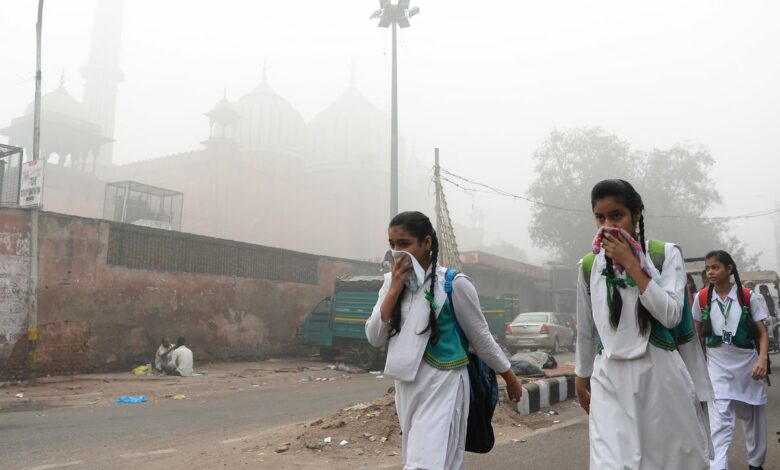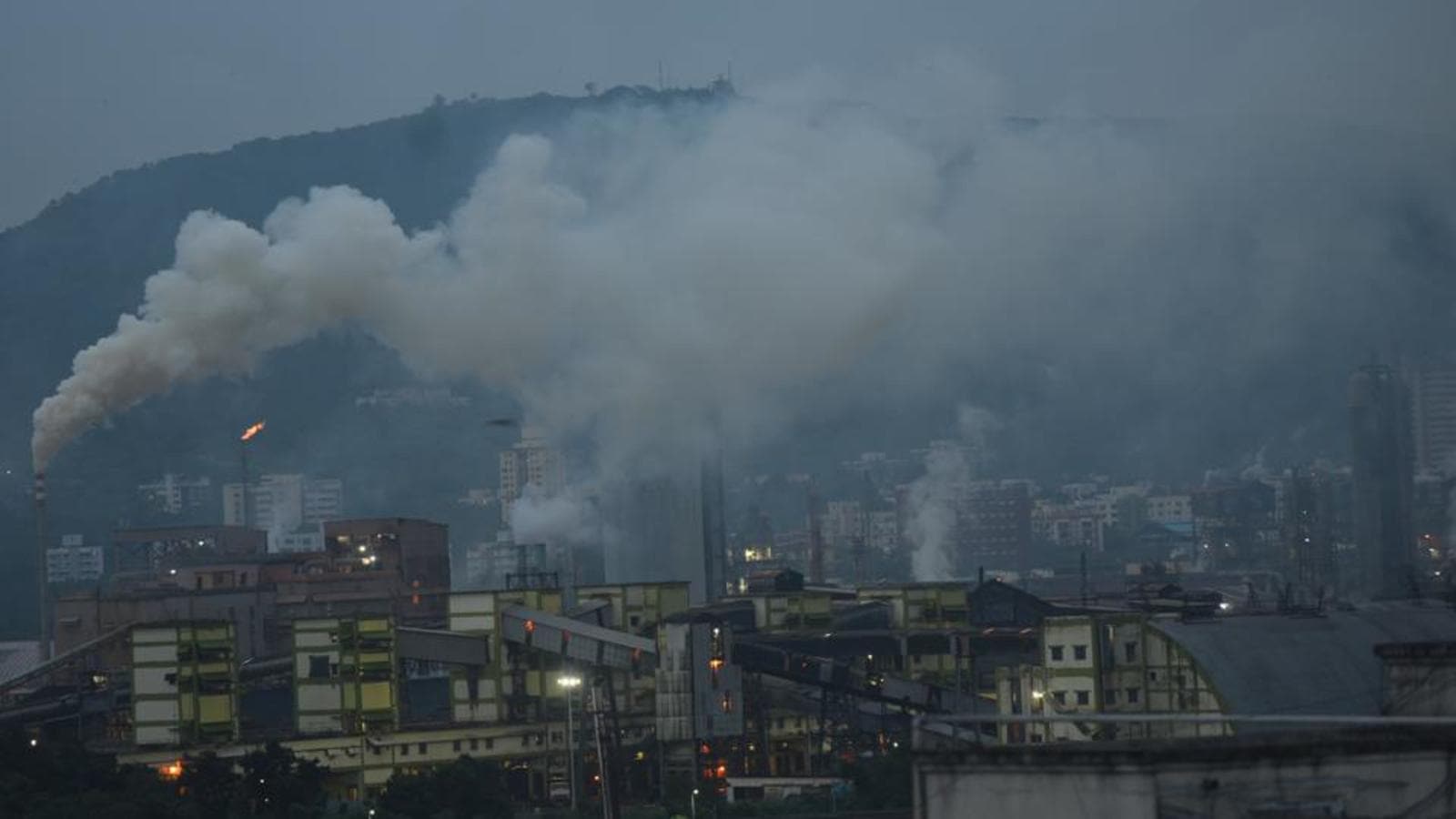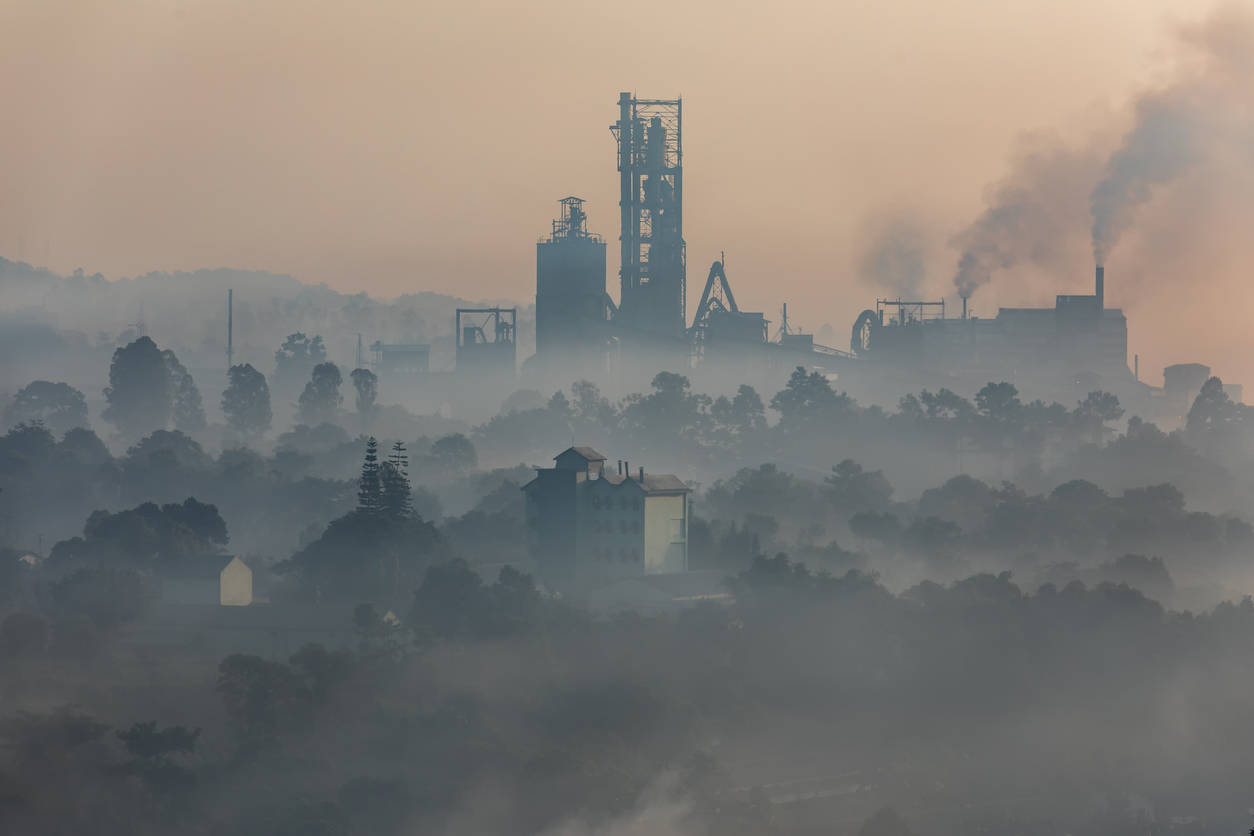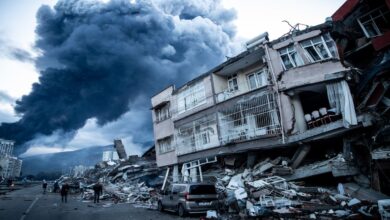In India, the worst science choking the economy in 2022

In India, the worst or bad science choking the economy in 2022
Government officials say there is no correlation between pollution levels and deaths and diseases, despite rising air pollution levels year after year. This distortion of science must be corrected during India’s review of its air quality standards for the next decade.
In India, pollution ranks second only to malnutrition as a cause of ill health. Over the past two decades, death rates related to indoor air pollution – particulate matter and ozone – have more than doubled. There were almost 1.7 million indoor and outdoor air pollution deaths in 2019 (Pandey et al. 2020). A health burden of this magnitude cost India $36.8 billion or 1.36 per cent of its GDP in 2008. Most cities in north India exceed global and domestic pollution standards, making it India’s most polluted nation. (WHO 2017).
Although the Indian government has called into question these numbers, it claims there is no conclusive evidence showing that air pollution is directly related to death/illness (MoEFCC 2021). India’s air quality is deteriorating with each passing year, yet action is hampered by those wanting a larger base of “local evidence.” This prevarication has serious implications for India’s efforts to reach a level of air quality that is considered healthy.
As India begins its review of decadal standards for air quality, these distortions of science can cause lasting damage for generations.
Distorting science
Many reputed epidemiologists, physicians, atmospheric scientists, and statisticians collaborated extensively to estimate the death and disability rates from air pollution in India. Indian Council of Medical Research, Public Health Foundation of India, and the Institute of Health Metrics and Evaluation lead the effort. A similar study was conducted at the Indian Institute of Technology Bombay, the Health Effects Institute in Boston, and the University of Chicago.
It is stated by the government that little is known about the harmful effects of air pollution in India. On the contrary, considerable evidence exists at the local level.
Such large-scale models based on global studies and unconnected to Indian conditions say the government and its affiliated institutions are unreliable in their health impact estimates. Additionally, health problems are linked to air pollution under unjust causality conditions.
Several incorrect claims are underlying these arguments.
There are two reasons for this. The first is that evidence from global data cannot be generalized across geographic regions to estimate national impacts since most countries are exposed to lower levels than India.
However, data from hundreds of studies across the globe are gathered to derive estimates of the global burden of disease (GBD) from air pollution (Burnett et al. 2014) that may represent a wide range of exposures to pollution. Data on China and India have been added to these estimates as of 2019, as opposed to just those from North America and Western Europe (where the bulk of research on this subject has taken place).
Incorporating these studies into the GBD helps collaborators understand health impacts across a spectrum of exposure levels, from the lowest to the highest, thereby enabling extrapolations for various regions across the globe.
Second, Indians can cope with higher levels of air pollution because we are different from other people.
Especially when physicians also participate in such misconceptions, this is a particularly harmful claim. Despite what many may think, the cardio-respiratory systems of Indians are not impervious to harmful effects. Accordingly, studies in China have found similar results to our own, indicating that our ability to adapt to air pollution is not affected by exposure to similar levels (Hystad et al. 2020).
According to recent studies, Indians – especially those in rural or industrial areas and urban slums – may be more vulnerable to air pollution insults because of early childhood deficiencies, genetic predispositions, social stratification, poor healthcare access, and the effects of other pollutants.
Historically, Asher Ghertner (2019) argues that the concept of an “indigenous lung” came about to justify racial division in colonial India. Using this claim as an excuse to do nothing about air pollution in recent years is insidious. Shertner notes that in the Vardhman Kaushik vs Union of India case, decided in 2016; the Indian government argued that global benchmarks for pollution did not apply to the Indo-Gangetic region due to its inherent pollution.
Several policy briefs published recently by the National Institute of Advanced Studies (NIAS) asserted that Indian populations have become immune to pollution due to evolutionary processes. This brief made fun of evolutionary biology as much as it did of common sense. It was written by geologists, mining engineers, and atmospheric scientists, all highly qualified in their fields but without any experience in epidemiology.
Tobacco smoking, poor nutrition, or water contamination are some of the serious risk factors addressed by epidemiology. The same holds for air pollution.
The third criticism is that Indian data on the effects of air pollution are limited to nonexistent.
Local evidence indicates the opposite. The study conducted in the 1950s by S. I. Padmavati, a well-known cardiovascular specialist, found that high levels of air pollution have been suggested to cause high rates of pulmonary heart disease among low-income Delhi households (Padmavati and Pathak 1959). Through the 1960s, 1970s, and 1980s, physicians continued to describe the harmful effects of air pollution in major national medical journals.
India’s scientists have applied complex methodological schema over the last two decades to examine the effect of air pollution exposure on a range of health outcomes. According to various studies (Singh et al. 2019; Krishna et al. 2021), poor air quality is related to premature mortality in young children and the elderly (DeSouza et al. 2022; Liao et al. 2022).
It is also linked to hypertension (Prabhakaran et al. 2020), reduced lung function, and premature births (Maji, Ghosh, and Ahmed 2018). Studies relying on field measurements have excluded the issue of extrapolating from modelled estimates since they use real data collected from thousands of study participants.
The effects of air pollution exposure are also noted in the health ministry’s germinal report of 2016, where it was noted that the pervasive and long-term consequences are widespread (Balakrishnan et al., 2015). Additionally, the Health Ministry hosted a repository of Indian studies on air pollution and one hosted by the National Environmental Engineering Research Institute of the Council of Scientific and Industrial Research.
Last but not least, the argument that air quality is directly responsible for mortality rests on a red herring: that any individual death can be directly linked to pollution. A death caused exclusively by air pollution is not possible for the simple reason that air pollution does not affect the body in any way.
By their nature, diseases are multi-factorial, being caused by diverse factors, including genetics, environment, and behaviour. Epidemiology aims to determine how many of these diseases in a population are caused by these risks. Applied risk factors such as tobacco smoking, poor nutrition, or contaminated water are being addressed through such work, and air pollution must be addressed similarly.
As a ubiquitous and long-term source of pollution, air pollution presents unique scientific challenges. Yet, the evidence accumulated over time cannot be ignored. Air pollution affects our health in a variety of ways. Still, the lack of a complete understanding of these effects only emphasizes generating indigenous capacity to carry out this work.
The impact of various components of particulate matter is currently not catalogued in Indian studies. Likewise, we should greatly expand the various long-term cohort studies that help us better understand air pollution’s health implications over the life cycle. Studying the health effects of specific air pollution interventions would also help refine policy.
Despite our efforts to fill in those gaps, we should adhere to the time-honoured principle that the absence of evidence does not mean the science does not exist by using best practices.
Factoring health
With India’s proposed review of its air quality standards, the hollowness of the government’s arguments is especially evident.

The nation’s national ambient air quality standards (NAAQS) are revised every ten years. These standards define the parameters of clean and safe air to breathe throughout the country. In 2009, they were last revised.
Since the previous version of the guidelines, there has been a growing body of local evidence to drive the proposed revisions – announced shortly before the WHO released its own updated and more stringent guidelines. The standards must also reflect the kind of development pathway nations choose and the growing global consensus on air quality norms.
With few representatives from the health sector represented on expert committees, there is a distinct lack of health science factoring into environmental decision-making.
Integrating a health framework into environmental policymaking should be one of the fundamental principles when revising the air quality standards. This requires focusing on local sources of pollution, such as household fires and transportation, instead of only those that contribute to ambient air pollution loading more broadly.
In the policymaking process and setting emission standards, mandatory health impact assessments can strengthen the evidence base for environmental policymaking.
Recognizing that environmental policy exists to protect public health would also be important. In the current environment, health science does not factor in environmental decision-making significantly, and health sectors appear to be underrepresented on expert committees.
If they are included, health representatives are most likely to be physicians. Still, Indian physicians lack the knowledge needed to effectively assist patients or communicate their concerns about air pollution to the broader Indian community. In studies, Indian doctors have shown to be largely unaware of the systemic and cascading effects of air pollution, beyond knowing how it affects the lungs directly.
According to the NIAS brief, physicians are largely unfamiliar with epidemiology and statistics, which are necessary for large-scale studies to inform air pollution policy. By supplementing the medical curriculum with relevant information on environmental risk factors and disseminating the latest research to broader medical communities, we can build the capacity of physicians to effectively fulfil what a public health mandate rather than a medical mandate is.
An expanded perspective
At the end of the 1980s and the beginning of the 1990s, environmental lawyer M.C. Mehta filed public interest litigation based on environmental concerns in the Supreme Court. Several claims related to air pollution litigation are being taken under the court’s wing in the eponymous case to this day. In the early 2000s, the court’s directives led to significant policy changes, including the shift from diesel to compressed natural gas for Delhi’s public transport.
As a result of these efforts, however, India’s air quality and the capital have deteriorated significantly over the past two decades.
In the wake of the Covid-19 pandemic, India must continue to rebuild and envision a radically different development pathway based on science, rationality, inclusivity, and interdisciplinarity.
Delhi’s air quality reaches its nadir around winter when its air quality becomes a public issue. The news media, parliamentary inquiries, and television debates rehash familiar, often erroneous arguments. A discussion ultimately settles around the specific causes of extreme cold exposure in winter and the immediate sticking plaster remedies needed to resolve this.
The story serves as a warning against piecemeal solutions that ignore basic scientific principles as they were employed to combat Delhi’s air pollution crisis. In addition to spending crores on ineffective smog towers, rerouting truck traffic and outsourcing pollution from thermal power plants to the less fortunate, we have also constructed inefficient smog towers.
While India rebuilds and envisions a radically different development pathway after the Covid-19 pandemic, we must ensure that our environmental policymaking is grounded in science, rationality, inclusivity, and interdisciplinarity. A review of the NAAQS and the methodology can provide a framework for transparent, replicable, and scientifically-based policymaking structures.
In establishing a National Knowledge Network (NKN) of technical experts under the National Clean Air Programme, an important first step has been taken aimed at helping cities address their air pollution problems. The platform needs to embrace a spirit of inclusion that invites individuals of different areas of expertise beyond environmental engineers into its fold to translate knowledge into action effectively.
Whenever a complex issue like air pollution that is affected by multiple economic, social, environmental, and economic factors requires multidisciplinary attention, that attention must be given.
A broader panel of scientific experts with expertise in epidemiology, atmospheric science, environmental engineering, public policy, and social sciences can complement this narrowing of expertise. Air pollution is a complex problem that involves economic, social, environmental, and economic influences, and that should be addressed with a multidisciplinary approach.
Strengthening institutions
In addition to restructuring our decision-making structure, we must strengthen the capacity of the institutions entrusted to develop these policies. The governing bodies in the United States are woefully underequipped in the current regulatory climate, which is rapidly transitioning away from compliance with stack emissions standards towards a more holistic perspective that takes into account ecosystems’ and airsheds’ carrying capacities.
Over the years, several reports, including those by parliamentary committees, have highlighted the lack of technical expertise within pollution control boards (PCBs), resulting from a lack of funding or untrained staff. Due to these capacity constraints, it is necessary to narrow the scope of tasks that can be handled by existing staff to prevent bottlenecks.
Our PCBs have much more to do than issue operating permits and conduct basic monitoring, thereby hindering progress at both the state and national levels. To maximize monitoring capacity, new staff must be hired as well as existing staff must be trained to merge the two types of data.
Not least because of the trade-offs involved, air pollution will take several years if not decades for us to eliminate, not to mention the impact on health, economic growth, and livelihoods. Furthermore, it will require strategic planning and forward-looking policies based on fundamental scientific knowledge and evidence.
The status quo will continue as long as we choose to live in denial, putting vulnerable lives in danger. Regulatory and executive institutions must desist from spurious rationales and recognize that scientific principles need to be integrated into policymaking concerning environmental concerns.
Edited and published by Ashlyn Joy





